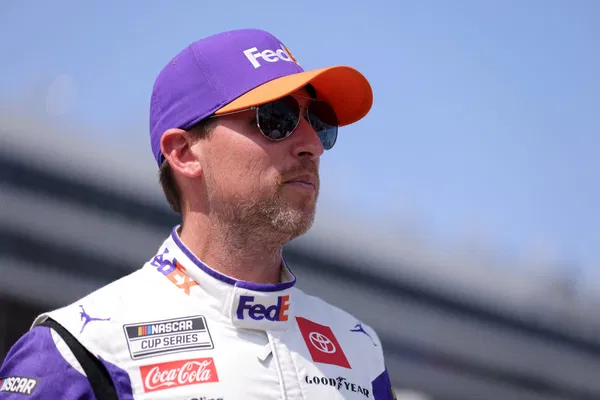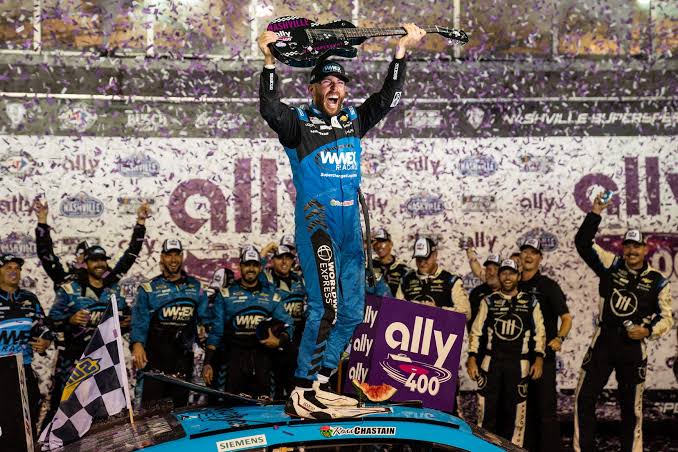Denny Hamlin, a well-known figure in NASCAR and a successful car owner, recently shared his frustrations regarding the Next Gen cars, highlighting the challenges that come with owning and maintaining them. He openly expressed his reluctance to invest in any new parts or pieces for these vehicles, stating, “As a car owner, I do not want to buy any parts or pieces for these Next Gen cars.” His candid remarks reflect the struggles many in the racing community are facing as they adapt to the ongoing changes and requirements associated with these cars.
Hamlin pointed out that keeping up with all the modifications has become increasingly difficult. With numerous adjustments and updates that teams have to implement, he believes the burden has become too much for car owners to handle. This statement resonates with many in the sport who are grappling with the complexities of the Next Gen model. The intent behind the design was to create a more competitive and cost-effective car, but the reality has proven to be quite different.
Looking back at the initial development of these vehicles, Hamlin believes there were significant design flaws from the start. He recalled having suggested years ago that the racing community should consider a complete redesign—what he termed a Next Gen 2.0. However, he quickly added, “Take that off the record because it’s just going to be way too expensive.” This remark highlights the difficulty of initiating such a project, especially when considering the financial implications that come with a major redesign in NASCAR.
Hamlin’s admission that “we just didn’t do a great job with design from the get-go” sheds light on a critical issue within the sport. It emphasizes the importance of thoughtful and thorough planning in creating racing vehicles. If the design is flawed from the beginning, teams are left to grapple with the consequences, leading to frustration and increased costs. The overall goal was to enhance competition and reduce expenses for teams, but the challenges presented by the current design have led to the opposite effect.
Financial considerations are at the forefront of Hamlin’s critique. For many teams, the costs associated with purchasing new parts and keeping their cars up to date are significant burdens. Car owners are already under pressure to remain competitive, and the financial strain of maintaining and upgrading the Next Gen cars only adds to their difficulties. Hamlin’s frustration speaks to a larger concern in the NASCAR community regarding the sustainability of competing at a high level while dealing with rising costs.
His insights also highlight how these challenges impact the competitive landscape of NASCAR. If car owners struggle to keep up with expenses, it can create disparities among teams. Some may find it increasingly difficult to compete effectively, which undermines the spirit of racing. Hamlin understands that a fair competition is crucial for the sport, and if teams can’t afford necessary updates and modifications, the quality of racing can suffer as a result.
Hamlin’s comments have sparked conversations among fans and fellow drivers alike. His willingness to express dissatisfaction with the Next Gen cars reflects a broader sentiment within the racing community, where many feel that while there have been advancements, the current model presents significant challenges that must be addressed.
The idea of developing a Next Gen 2.0 may seem overwhelming, but Hamlin’s call for a redesign underscores the necessity of making changes that will benefit all teams. NASCAR has made strides in safety and technology over the years, and a thorough reevaluation of the current car design could lead to improvements that enhance both performance and the overall fan experience.
As the sport continues to evolve, Hamlin’s candid observations remind everyone involved that the complexities of NASCAR extend beyond the racetrack. The financial, competitive, and design challenges all play critical roles in shaping the future of racing.
In the end, Denny Hamlin’s perspective on the Next Gen cars serves as an important reminder of the ongoing need for dialogue and change within NASCAR. By voicing his concerns, he encourages a conversation that could ultimately lead to a more balanced and competitive environment for all teams. As the racing community navigates these challenges, it will be essential to listen to the voices of drivers and car owners, ensuring that the future of NASCAR remains bright and exciting for everyone involved.
Do you agree with Hamlin?




